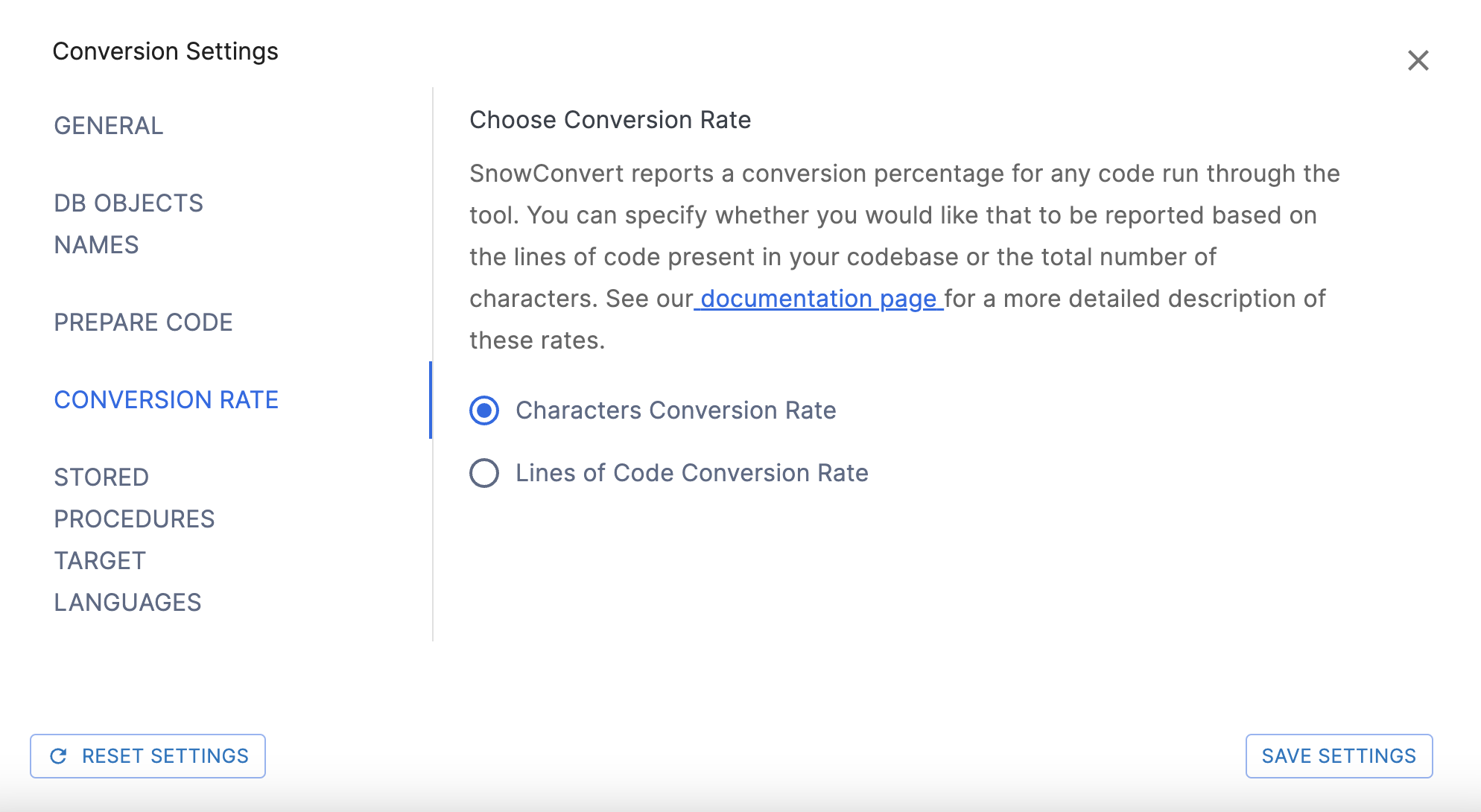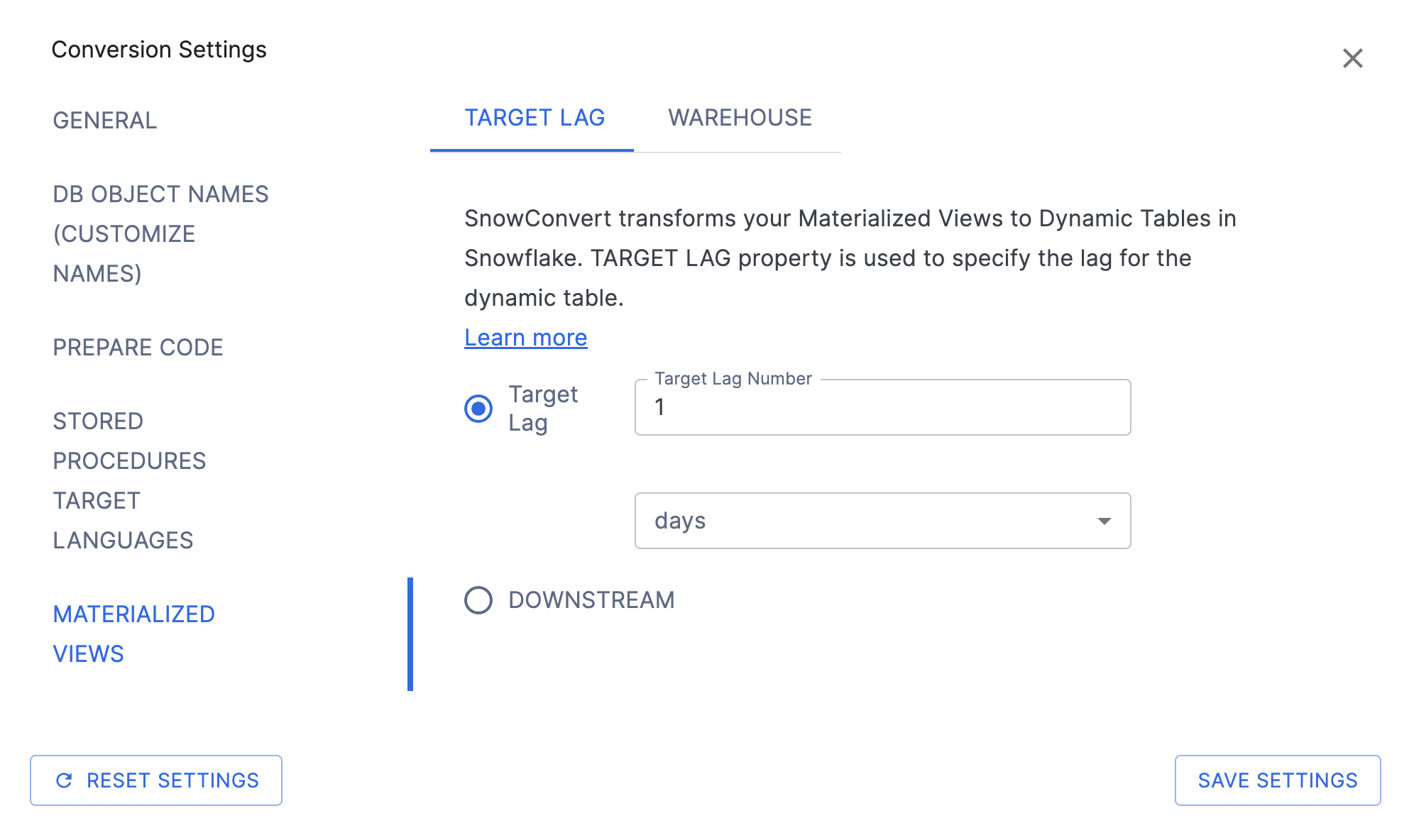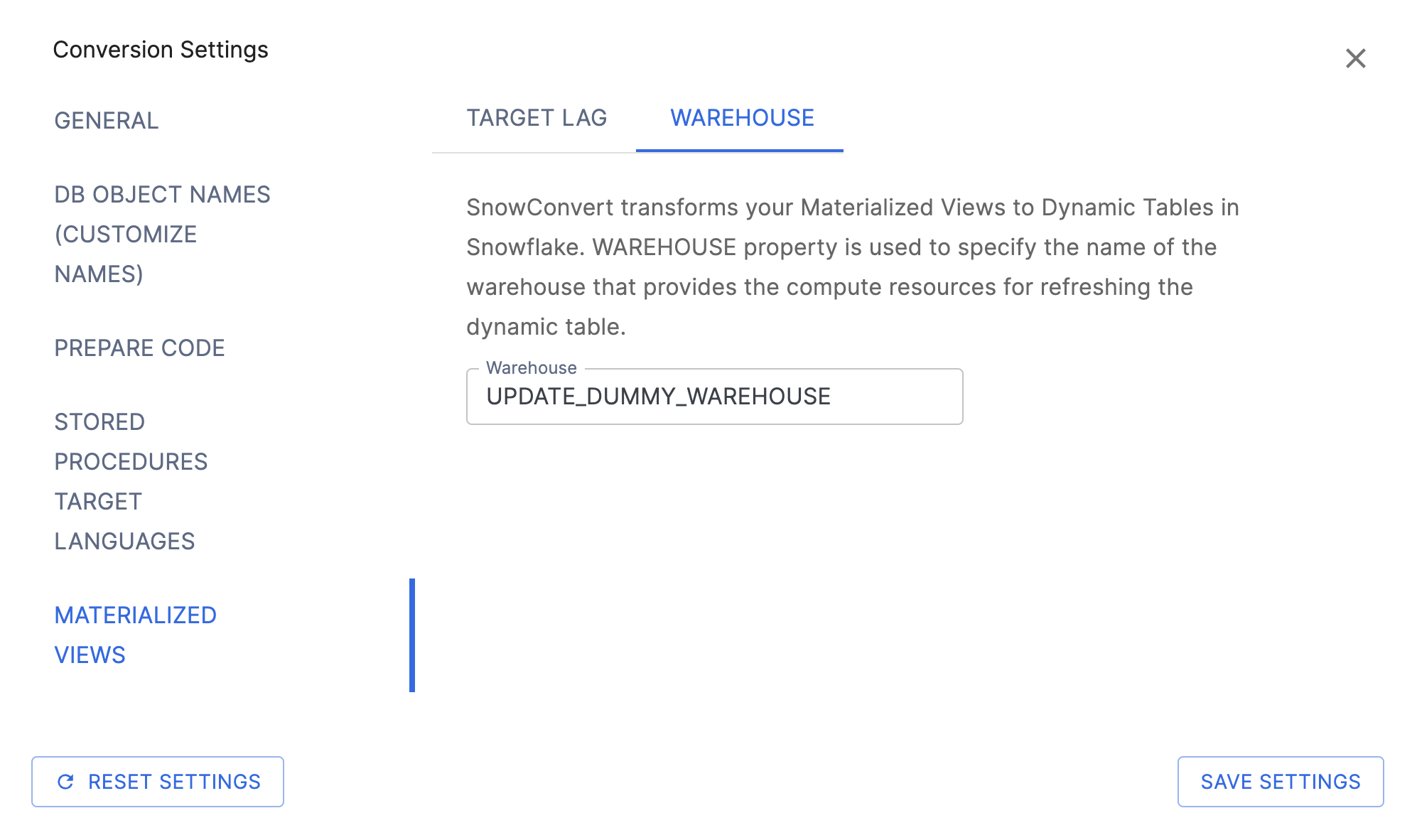SnowConvert AI - 일반 변환 설정¶
파일 인코딩 설정¶
SnowConvert AI의 이 설정에 따라 도구가 소스 파일 내의 텍스트를 읽고 해석하는 방법이 결정됩니다. 변환 중에 모든 문자, 특히 악센트가 있는 문자, 기호 또는 다양한 언어의 텍스트가 올바르게 처리되도록 하려면 올바른 인코딩을 선택하는 것이 중요합니다. 기본적으로 SnowConvert AI는 UTF-8을 사용합니다.

수동으로 인코딩 선택하기
드롭다운 메뉴에서 특정 인코딩을 선택하여 이 자동 프로세스를 재정의하도록 선택할 수 있습니다. 인코딩을 수동으로 선택하는 경우(UTF-8을 명시적으로 선택하더라도), SnowConvert AI는 선택한 인코딩_만_ 사용하여 파일을 읽습니다.
사용 가능한 인코딩 옵션
드롭다운 목록을 사용하면 SnowConvert AI가 다음 특정 인코딩 중 하나를 사용하도록 설정할 수 있습니다.
| Code Page | Name | Display Name |
|---|---|---|
| 1200 | utf-16 | Unicode |
| 1201D | unicodeFFFE | Unicode (Big endian) |
| 12000 | utf-32 | Unicode (UTF-32) |
| 12001 | utf-32BE | Unicode (UTF-32 Big endian) |
| 20127 | us-ascii | US-ASCII |
| 28591 | iso-8859-1 | Western European (ISO) |
| 65000 | utf-7 | Unicode (UTF-7). Not available in .NET 5 |
| 65001 | utf-8 | Unicode (UTF-8). Default encoding |
시스템 기본값(미리 보기) 이해하기
**시스템 기본값(미리 보기)**을 선택하는 경우 SnowConvert AI는 유연한 접근 방식을 사용합니다.
먼저 각 입력 파일의 특정 문자 인코딩을 자동으로 감지하려고 시도합니다.
자동 감지가 인코딩을 식별하지 못하는 경우, SnowConvert AI는
UTF-8을 사용하여 진행됩니다. 이는 매우 광범위한 문자를 처리하며 최신 파일에 대해 일반적입니다.대체 수단으로, UTF-8에서 유효하지 않은 문자를 발견하여
UTF-8해석이 실패하는 경우 SnowConvert AI는 컴퓨터의 기본 시스템 인코딩을 사용하려고 시도합니다.
이 동작은 실험적이므로 “미리 보기”로 표시됩니다. 시스템 기본값은 컴퓨터와 운영 체제마다 크게 다를 수 있으므로 결과가 일관되지 않거나 지원되지 않는 인코딩이 발생할 수 있습니다.
권장 사항
텍스트 해석과 관련된 오류가 발생하거나 결과에 읽을 수 없는 문자가 표시되는 경우 올바른 인코딩을 수동으로 선택하는 것이 가장 좋은 해결책입니다. 파일이 특정 형식(예: Western European)을 사용하는 경우 해당 형식을 선택합니다. 확실하지 않지만 인코딩 문제가 의심되는 경우 명시적으로 UTF-8을 선택합니다. 이는 최신 파일에 대한 가장 일반적인 표준이므로 좋은 출발점이 되는 경우가 많습니다.
구체화된 뷰 변환 설정¶
이 페이지에서는 변환 중에 구체화된 뷰(또는 Teradata의 조인 인덱스)를 동적 테이블로 변환하기 위한 매개 변수를 사용자 지정하는 데 필요한 옵션을 찾을 수 있습니다.


구체화된 뷰 또는 Teradata 조인 인덱스의 전체 기능을 유지하기 위해 SnowConvert AI는 일대일 구체화된 뷰를 생성하거나 조인 인덱스를 구체화된 뷰로 변환하는 대신 동적 테이블을 생성합니다. Snowflake에는 다른 시스템의 구체화된 뷰에서 사용할 수 있는 특정 구성 옵션이 없기 때문에 이 접근 방식이 필요합니다.
Snowflake에서 구체화된 뷰의 제한 사항에 대한 자세한 내용은 구체화된 뷰 제한 사항 섹션을 참조하십시오.
변환¶
여기에 정의된 설정은 변환 프로세스 중에 생성된 동적 테이블의 모든 인스턴스에 적용됩니다.
동적 테이블 변환 설정:
목표 지연: 이 설정은 동적 테이블의 내용이 기본 테이블의 업데이트보다 지연될 수 있는 최대 허용 시간을 지정합니다. 예를 들어, 5분으로 설정하면 동적 테이블의 데이터가 기본 테이블의 업데이트보다 5분 이상 뒤처지지 않도록 합니다.
웨어하우스: 이 설정은 동적 테이블을 새로 고치기 위한 컴퓨팅 리소스를 제공하는 웨어하우스의 이름을 지정합니다. 동적 테이블을 생성하려면 이 웨어하우스에 대한 USAGE 권한이 있어야 합니다. 기본적으로, SnowConvert AI는 자리 표시자 값을 사용합니다.
자세한 내용은 Snowflake 동적 테이블 설명서 를 참조하십시오.
Next steps for Amazon Redshift databases¶
For Amazon Redshift databases, you can use SnowConvert AI to complete the following tasks after conversion: